Having a bustling aquarium can sometimes prove to be challenging and often centers on achieving optimal water conditions. The direct application of vital supplements is a tedious task and results in variations that put pressure on aquatic pets. This is an area where dosing pumps prove to be a worthwhile asset.
Content Table
In this guide, we will explain how these small but convenient dosing pumps work, how efficient they are in freshwater, saltwater, and reef aquariums, and how to use a dosing pump safely after installation. Now, let’s see how dosing pumps can help you with your aquarium and its inhabitants, and make the water in the tank cleaner.
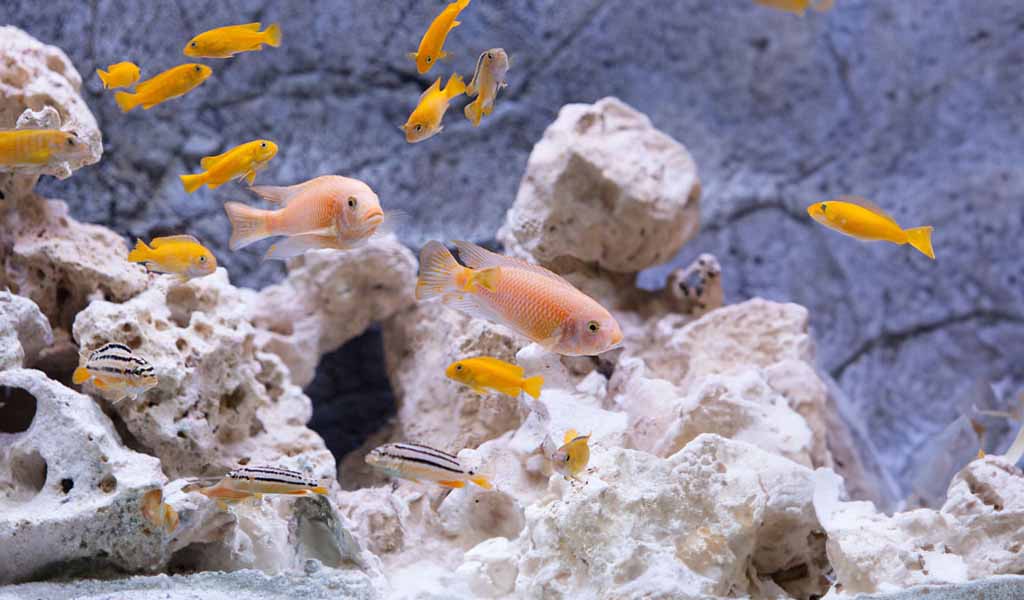
Dosing Pumps Work in Aquarium
What is the Dosing Pump for Aquariums
A dosing pump is an aquarium equipment type with the main purpose of dispensing proper quantities of liquids directly into your aquarium. It is like a miniature robot that can calculate the required proportions and then mix the ingredients in the right quantities.
Scope of Use
Regardless of having a freshwater, marine, and reef aquarium, it is very significant to monitor various conditions of the water that can also affect your fish and other sea creatures. Dosing pumps do this effectively by delivering key compounds such as calcium, alkalinity, and trace elements regularly. They also accurately dispense other additives including phosphate removers or certain supplements, eliminating the need for extra time to blend on your own.
How Do Dosing Pumps Work
Dosing pumps are effectively liquid dispensing mechanisms that are ideal for use in aquariums. At their core, they consist of three primary components: These are a reservoir, a pump, and a control unit.
The Reservoir
This is the container where you put the liquid solution that you want to dose. It varies from small-sized containers for single-shot additions to larger tanks for more frequent or massive applications. The reservoir should be made out of a material that would be suitable for the solution that it will contain, such as glass or food-grade plastic.
The Pump
The pump is the central component in any dosing pump and is tasked with the responsibility of drawing the liquid from the reservoir and dispensing it into a selected aquarium. Some of the pumps used in dosing pumps include peristaltic pumps and diaphragm pumps.
- Peristaltic pumps: These pumps utilize a portable tube for moving the substance from one place to another. Therefore, as the tube is compressed, the liquid is forced to move forward and out of the tube.
- Diaphragm pumps: These pumps utilize a diaphragm to develop a vacuum and pressure, to pump the liquid in and out.
The Control Unit
The control unit is the central processing unit of the entire operation. Besides, it defines when the liquid is to be released and in what quantity. Modern dosing pumps feature several preset programs that can be adjusted according to the needs of your aquarium.
- Timing: It can be programmed to deliver doses at various intervals, which may include daily, weekly, or even hourly.
- Volume: One can easily control the quantity of liquid that is dispensed to suit the needs of any aquarium.
- Calibration: Some of the dosing pumps have controls for making changes for precise dosing of the pump.
When these components are put together, the dosing pump ensures accuracy and ease in achieving appropriate water conditions in aquariums.
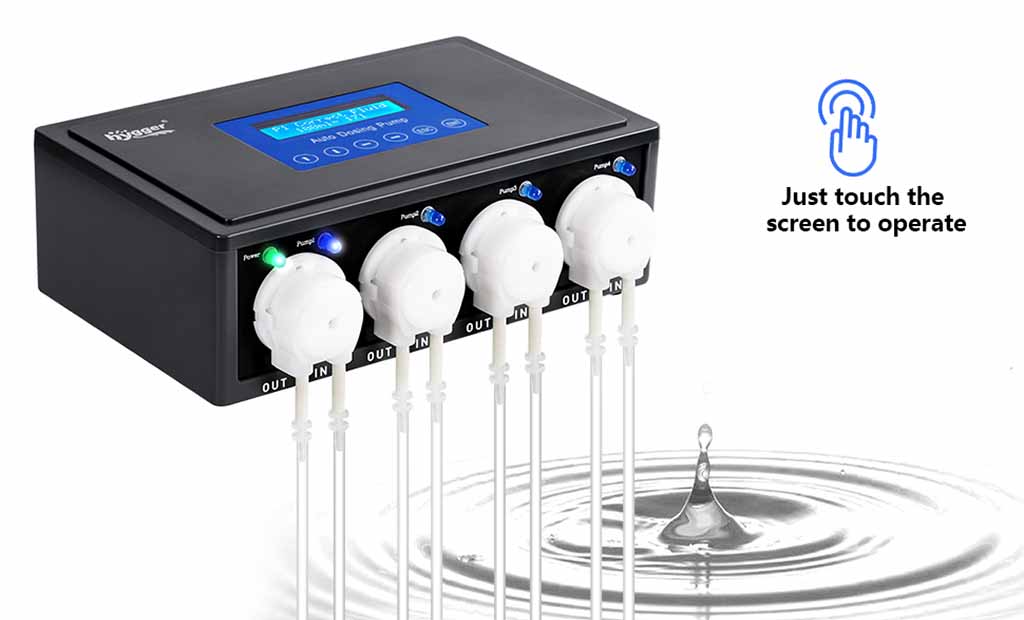
Dosing pump for aquarium
What Can I Dosing to My Tank?
Dosing pumps offer incredible versatility in managing your aquarium’s water chemistry. Here are some common additives you can precisely deliver using a dosing pump:
For Freshwater Tanks
- Fertilizers: Essential for planted tanks, dosing pumps can accurately deliver macronutrients (nitrogen, phosphorus, potassium) and micronutrients (iron, calcium, magnesium) to support lush plant growth.
- pH buffers: Maintain optimal pH levels for sensitive fish species.
- Water conditioners: Regularly dose with chlorinates or other water conditioners to ensure water safety.
For Saltwater and Reef Tanks
- Calcium and alkalinity supplements: Essential for coral growth and overall water balance.
- Trace elements: Replenish vital minerals like strontium, iodine, and magnesium.
- Amino acids and phytoplankton: Provide additional nutrients for corals and other invertebrates.
- Carbon dosing: Helps control nuisance algae by reducing nutrient levels.
Remember: Always consult specific guidelines for your aquarium type and inhabitants. Overdosing can be harmful, so start with low doses and gradually increase as needed.
How to Use a Dosing Pump
- Test water parameters: Regularly monitor your tank’s water quality to determine dosing needs.
- Choose additives: Select appropriate additives based on your aquarium type and goals.
- Calibrate the pump: Accurately measure and set the dosing volume.
- Create a dosing schedule: Determine the frequency and timing of doses based on your tank’s requirements.
- Monitor and adjust: Regularly check water parameters and adjust dosing as needed.
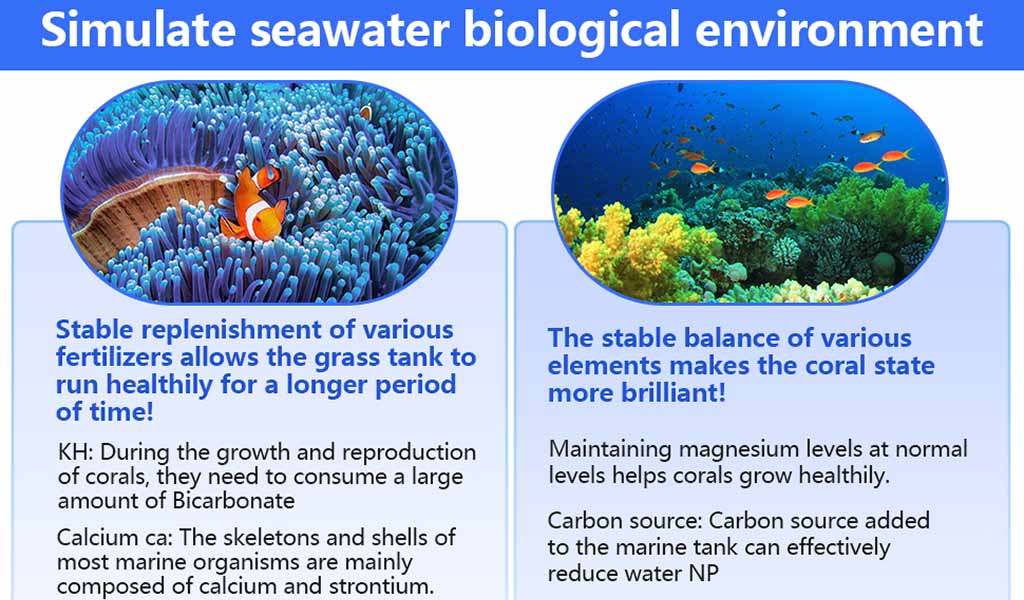
How to use a dosing pump
Aquarium Dosing Pump Setup
Perhaps, getting the dosing pump installed could seem to be a complex task, but just in case it becomes very easy to do. Here’s a general guide.
Equipment Needed
| Dosing pump | Tubing | Spatulas or spoons |
| Reservoirs for additives | Clamps or zip ties | Water test kit |
Step-by-Step Setup
- Choose a Location: Choose a good location for the dosing pump and reservoirs, if possible, close to the aquarium, i.e., on top of the tank.
- Prepare Reservoirs: Add the required amounts of additives to the reservoirs. Ensure that each one of them has a clear name so that they can easily be distinguished from each other.
- Connect Tubing: Secure the tubing onto the dosing pump and reservoirs with clamps or zip ties if it has not been done already. Check and prevent water leakage on the building or any part of the structure.
- Prime the Pump: Prime the pump to get the tubing in contact with the liquid to be metered. This eliminates the formation of air bubbles in the solution and hence ensures proper dosing of the medication.
- Calibration: It is to be noted that most dosing pumps will need calibration. Follow the guided instructions below to make the right calibration of the pump: This step is essential for achieving correct dosing results.
- Programming: Choose the dosing schedule according to the aquarium’s requirements. Decide the quantity of each additive to be administered and how often.
- Placement of Output: You can redirect the flow of the dosing pump to your aquarium or direct it to your sump, depending on the design. It is suggested to use a dosing manifold for multiple pumps.
- Testing and Adjustment: Ensure that you keep a close check on your water parameters after installing your dosing pump. To achieve these conditions, make some changes to the dosing schedule when necessary.
Additional Tips
- To avoid these problems, use high-quality tubing.
- It is also important to ensure that the dosing pump and reservoirs are cleaned often to prevent clogging.
- Another option for more precise control and monitoring is a dosing computer.
- Use the lowest doses possible and escalate the dosage, if possible, in case of side effects.
Conclusion
The dosing pumps are indispensable when people want to achieve proper conditions in the aquarium’s habitat. Concerning essential additive delivery, they assist you in saving time and energy and help you accurately measure the quantities required. If set properly and supervised, an aquatic environment provides a perfect environment that fulfills the needs of the inhabitants living in it. Always start with low doses, check water parameters occasionally, and then adjust according to the desired outcome.
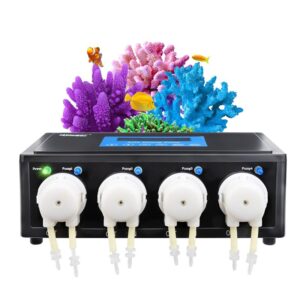
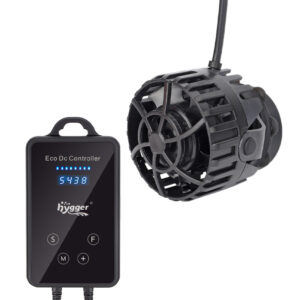
Leave a comment